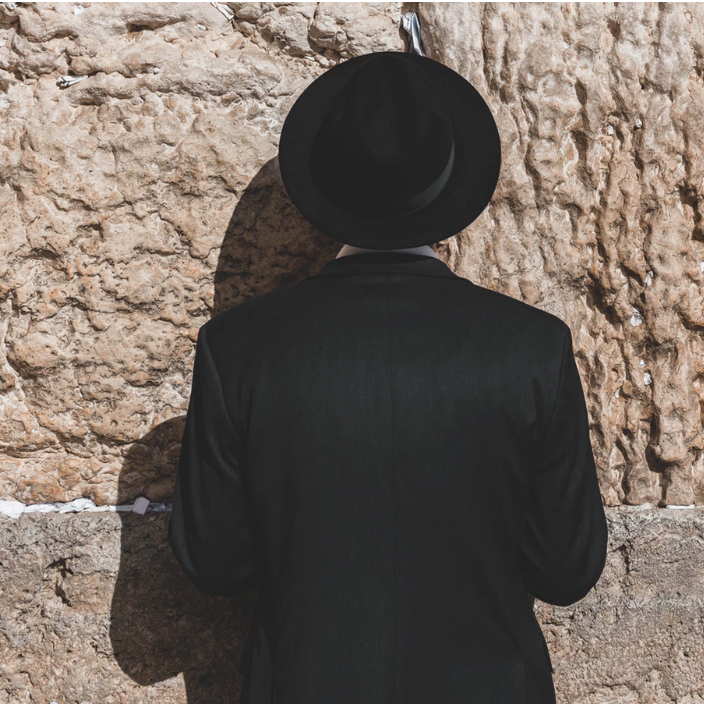
Sexism is Routine for Female Clergy
A female cantor walks into a funeral chapel. The funeral director says, “Nice to meet you, Cantor. Turn around and let me see the rear view.”
Rabbis and cantors who are also women hear some version of this from time to time, but less frequently today than 40 years ago.
Although we’re aware that it’s impossible, many of us try to dress in a way that’s designed to prevent sexist comments. By keeping our necklines high and our hemlines low, by avoiding anything clingy, we work at a calculus that has variables clearly beyond our control. Our sought-after formula usually depends on some perfect calibration of the “female” aspect of the term female clergy and the “clergy” part. If nothing else can, the theory goes, looking HOLY should shut it all down.
A holy “look” has been in fashion at least since biblical times. Back then, priests wore all kinds of special accessories, from jeweled necklaces to embroidered epaulets. Their clothing was adorned with bells to announce their presence. Priests were supposed to stand out in a crowd. They enjoyed high status. After all, they were carrying out sacred rituals—theatrical ones, at that. Think incense, flambéed meat, and the mandated sprinkling of animal blood. Sacrifices had to be made in a specific order and accompanied by incantations. The priests played their heavily costumed role so that Israelites could appease their God with majesty.
As the centuries rolled by, synagogue and church ceremony began to rely more on words than burnt offerings. But the glitz remained a fixture. Glitz filled pews.
In the Middles Ages, Western literature started describing the bodies UNDER the clerical stylings. Not uncritically. In Chaucer’s Clerk’s Tale, a student priest is thin. Robin Hood’s Friar Tuck is large. Friar Tuck is judged to be too worldly, too self-indulgent. What religious standards could someone like that uphold? Chaucer’s student priest might have more spiritual discipline. But how compassionate can a self-denier be?
These assumptions never had anything to do with actual ministry. Instead, they satisfied the human need to criticize those who purportedly rank higher on the holiness scale.
When women began to shatter stained-glass ceilings, some congregational eyebrows hurtled skyward. The very presence of female officiants was startling to some and objectionable to others. Now, in 2019, although women clergy are old hat, some men can’t adjust to the existence of clergywomen. Period.
We women clergy remember the black-robe-related comments—generally imaginative speculation about what we might be wearing underneath those robes. Well, black robes are going the way of the dinosaur. Today, clergyfolk dress like the regular people we are.
But whether clergy dress like everyone else or not, a distinct problem for women persists. It’s the same problem that has always dogged women and girls: the objectification of our bodies—and the attendant rumination about them.
Here’s what’s worse: We women have learned to become watchful and wary because we’ve internalized the objectification. How do I LOOK from the bima? we wonder. What image am I conveying to congregants? we ask ourselves. Do I look approachable? If I’m going for “humble dignity,” do I wear a jacket?
And this watchfulness isn’t limited to how we style ourselves. Many of us are hypervigilant about diet or exercise, too. And so we interrogate ourselves further: If I post a Facebook pic of myself looking sweaty and triumphant after a run, am I modeling healthy behavior? What about the late summer profile pic where my cellulite can be seen with the naked eye? If I’m going for “cheerful cred,” do I share the image of my hand around my industrial-scale chocolate ice cream cone?
The prevalence of stupid remarks contributes to our self-objectification. But it’s up to us to resist.
Last week I participated in a shiva service for the dad of a dear friend. My friend’s house was packed. As I was greeting people afterward, the effort of talking loudly enough to be heard over the crowd made me start to cough. One 50-something man said to me, “Do you need the Heimlich maneuver? Performing it on you would be fun for me!”
In the past, I’ve ignored such comments or even ruefully smiled at them. Last week, as I stared back at the man with incredulity and disdain, I let his words dangle alone in the air, exposed.
Obviously, we can’t completely escape degrading remarks yet, but I for one am over giving them a pass.
Maybe we women clergy—and our brothers, sisters, and gender-nonconforming siblings who are also the objects of profane jokes—should start a retro trend and bring some ancient priestly accessories into the twenty-first century. The ringing of these bells would warn, “STFU.”
Barbara Ostfeld, at age 22, became the first woman ordained as a cantor in 3,000 years of Jewish history. Her essays have appeared on the Lilith Blog, in the book New Jewish Feminism, and in 10 Minutes of Torah, a daily email that brings the Reform Jewish world to subscribers worldwide. Ostfeld’s memoir, CATBIRD: The Ballad of Barbi Prim, was published in 2019 by Erva Press. She will be honored with the Debbie Friedman award at the 2019 URJ Biennial this December.
2 comments on “Sexism is Routine for Female Clergy”
Comments are closed.




Would have been interesting to have more reflection on similarity and difference with experience of other professional women — does author mean to suggest clergy are greater targets and perhaps less sure how to respond?
Excellent suggestion and question. I don’t know much about the experiences of non-clergy women, but I assume that sexism afflicts most-if not all-women–and in all kinds of ways! If a woman is in a service profession, and if she has been raised to be a “good girl”, it’s certainly hard for her to know when and how to respond to sexism.